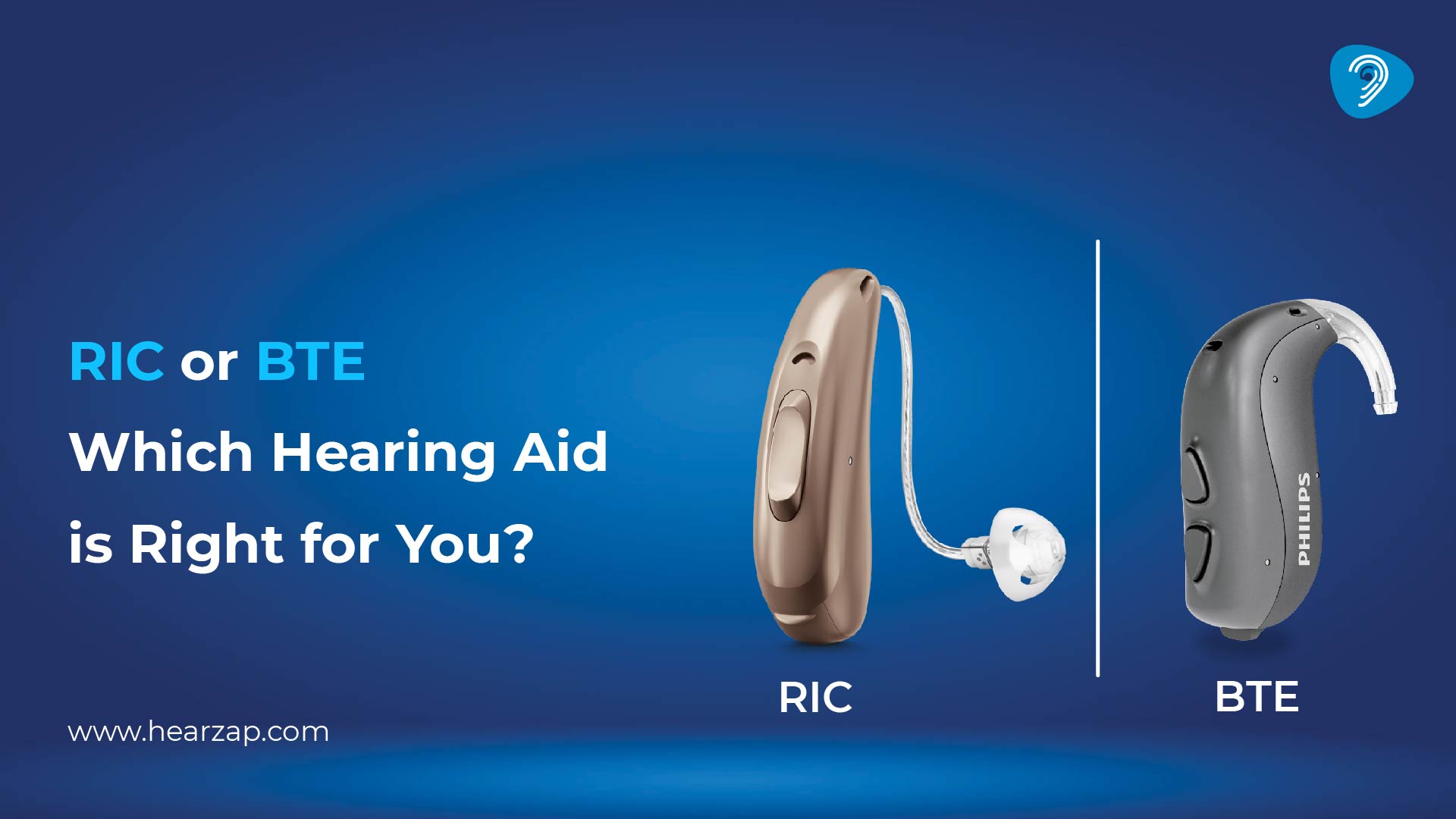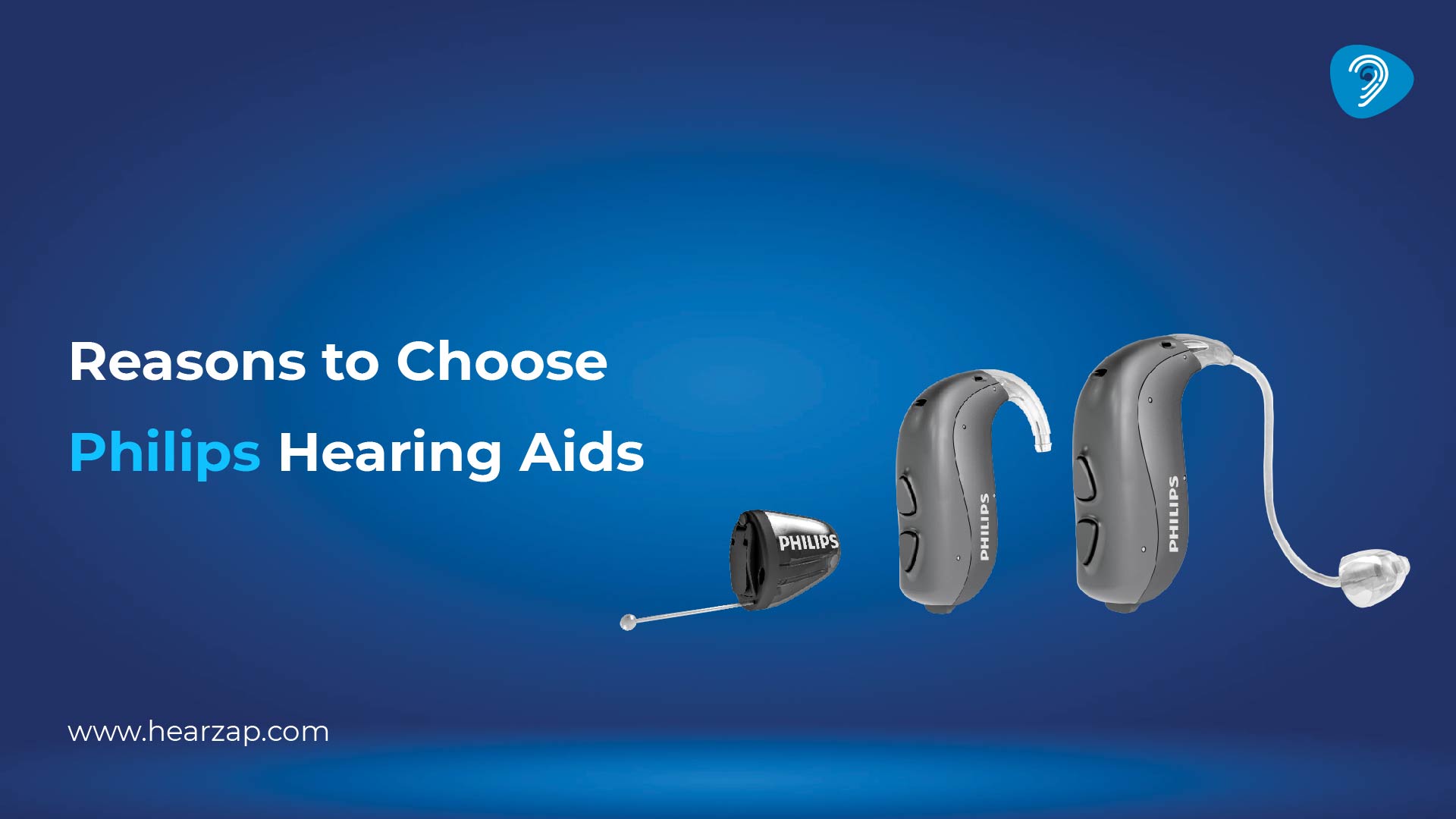HEARING AIDS
Hearing Aids vs. Hearing Amplifiers
By Team Hearzap | Sept. 11, 2024
There are many hearing device options available, each designed to meet different needs and preferences. People who have trouble hearing have to pick between hearing aids and amplifiers that help them hear. This guide will help you know what they are and which one to get by knowing the main differences between them.

What Are Hearing Amplifiers?
Hearing amplifiers, also called personal sound amplification products, are devices that increase the volume of all sounds in your environment without focusing on specific frequencies. These devices are particularly useful for individuals with minor hearing issues, as they provide a general boost in sound.
Who Should Use Hearing Amplifiers?
Hearing amplifiers work the same way for everyone; they equally increase all sounds independent of frequency. Generally speaking, most hearing amplifiers are made in a conventional manner and provide fewer choices for personalizing.
If you experience mild hearing issues, a hearing amplifier could be helpful.
What Are Hearing Aids?
Hearing aids are high-tech electrical devices that help people who have trouble hearing. They work by increasing sound, which makes it easier for people to understand conversation and other sounds around them. Hearing aids can be adjusted to work for different levels of hearing loss. They also have many advanced features to work in different environments.
The Benefits of Hearing Aids
Hearing aids are custom-made to meet your specific hearing requirements. An audiologist performs a complete hearing test to ensure that the device is configured to match your individual hearing loss profile. This ensures that just the necessary frequencies are enhanced, resulting in a more customized hearing experience. Hearing aids come in different styles.
- In-the-Ear (ITE) hearing aids are visible as they fit in the outer ear. They are suitable for people with mild to severe hearing loss and are easy to handle and adjust due to their size.
- In-the-Canal (ITC) hearing aids are smaller and fit partially in the ear canal, making them less noticeable than ITE aids. They work well for people with mild to moderate hearing loss who want a more discreet option but still need a bit of visibility for easy handling.
- Behind-the-Ear (BTE) hearing aids sit behind the ear and connect to a custom earmold that fits in the ear. They are ideal for people with moderate to severe hearing loss and offer strong amplification. Their larger size allows for bigger batteries and more powerful features.
- Receiver-in-the-Ear (RITE) hearing aids are similar to BTE aids but have a receiver (speaker) in the ear canal for a more discreet look. They are suitable for people with mild to severe hearing loss and provide a balance between discretion and power.
- Completely-in-the-Canal (CIC) hearing aids are the smallest and fit entirely inside the ear canal, making them the most discreet option. They are best for people with mild to moderate hearing loss who prefer an almost invisible hearing aid. Each type of hearing aid is designed to fit different levels of hearing loss and personal preferences for visibility and comfort.
Hearing aids have many advanced features that can analyze and change sound in real time to make words clearer.
- Noise Reduction Technology: This feature helps cut out background noise, so you can have clearer conversations, even in noisy places like outside or busy streets.
- Feedback Cancellation: It stops the annoying whistling sounds that sometimes happen with hearing aids, making your listening experience more comfortable.
- Wireless Connectivity: You can connect your hearing aids to devices like your phone, TV, or microphone without any wires, making it easier to enjoy sound from different sources.
- Rechargeable Batteries: You don't have to change batteries often, just recharge your hearing aids and use them all day.
- Variable Programming: You can set different programs for different places, like quiet rooms or noisy areas, to hear better.
- Direct Audio Input: You can plug your hearing aids directly into devices like TVs or radios for clearer sound.
- Remote Controls: You can adjust the settings of your hearing aids with a small remote without touching the aids themselves.
- Synchronization: If you use two hearing aids, they can work together for balanced sound in both ears.
- Telecoils: Telecoils help you hear clearly in places like theaters or churches by connecting your hearing aids to their sound systems.
These advanced features work together to make conversations feel more natural and enjoyable.
With the help of your audiologist, you can choose the hearing aid that best suits your specific needs and preferences. They will guide you in selecting the type of hearing aid that offers the best fit and performance for you.
What’s the Most Effective Choice?
Hearing aids work for different kinds of hearing loss and make listening more personalised, which could be very helpful for people with mild to serious hearing loss. A hearing amplifier, on the other hand, just works for mild hearing loss. They are not as accurate or customisable, making it hard to tell the difference between speech and background noise.
Modern hearing aids are very useful for every kind of hearing loss because of the sophisticated features. A lot of newer hearing aids include noise reduction features that may help you hear better in loud places by blocking out ambient noise. They direct the sound of an individual speaking directly in front of you or in any other specific direction using the directional microphones.
Also, you can stream music straight from your phone or other device thanks to the built-in wireless connection, and features like feedback cancellation keep hearing aids from making that obnoxious whistling sound. Hearing aids are now more effective and personalised than ever before due to technological advancements.
Related Blogs

RIC vs. BTE Hearing Aids: Which is Right for You?

Reasons to Choose Philips Hearing Aids

Tips for Buying a Hearing Aid

Rechargeable vs. Disposable Hearing Aid Batteries

Benefits of Noise Cancelling Hearing Aids

5 Best Reasons to Upgrade Your Hearing Aids
Contact us
We are here for all your hearing needs, from hearing tests to hearing aids. Fill out the form below, and we will give you a call soon.
Please enter a valid mobile number with 10 digits.
Recent Blogs
By None | Dec. 23, 2025
By None | Dec. 22, 2025
By None | Dec. 20, 2025
By None | Dec. 19, 2025
By None | Dec. 16, 2025









